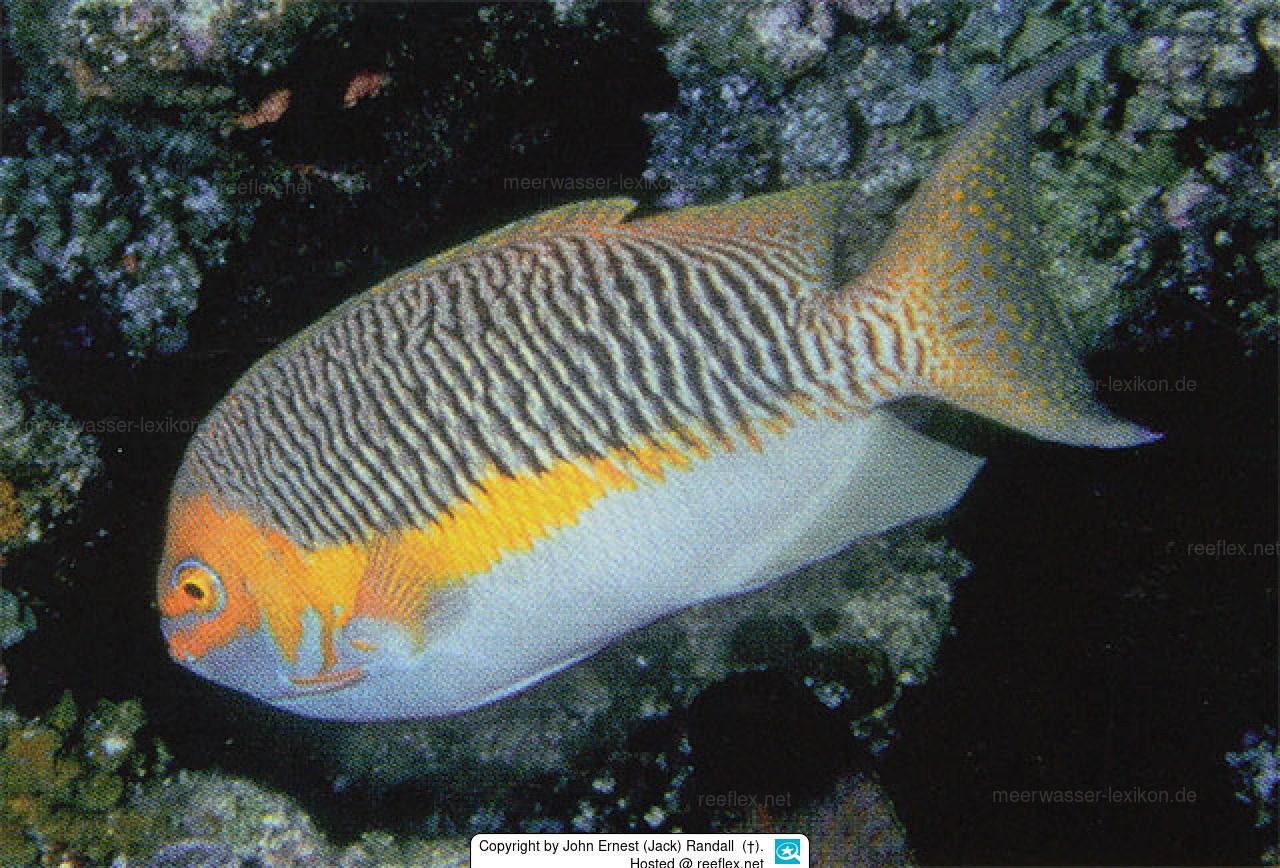Info
Genicanthus semifasciatus is also known as the Japanese Swallowtail. As the name implies the Japanese Swallowtail is fairly common among the islands of Japan; Inhabits seaward rocky and coral reefs. Similar to Genicanthus melanospilos, this species is also commonly called the Japanese Swallowtail. Typical for the genus, it will reach barely 20 cm in length. Females have been noted to begin the change to a male at 10 -11 cm of length.
The Japanese Swallowtail is one of the few angelfish to exhibit dramatic sexual dimorphism. The female is yellow dorsally, and light blue ventrally. The caudal fin is marine-blue highlighted by a dark, blue-black edging on the top and bottom. The male is a pale yellow, with multiple thin, dark, vertical stripes.
Genicanthus semifasciatus are less territorial and more passive towards members of the same species. Being planktivores, a diverse diet with frequent feedings is the norm for successfully meeting their dietary needs in captivity. Feed prepared and frozen foods like krill, raw table shrimp, squid, clam and mussel. It is also a good idea to occasionally supplement with some type of herbivore diet containing marine algae and supplement with a sponge fortified formula for Angelfish.
Cooler aquarium water temperatures, from 20 to 23° C, will aid in the transition of Genicanthus semifasciatus to captivity.
Synonym:
Holacanthus semifasciatus Kamohara, 1934
Classification: Biota > Animalia (Kingdom) > Chordata (Phylum) > Vertebrata (Subphylum) > Gnathostomata (Superclass) > Pisces (Superclass) > Actinopterygii (Class) > Perciformes (Order) > Pomacanthidae (Family) > Genicanthus (Genus) > Genicanthus semifasciatus (Species)
hma







 Dr. John Ernest (Jack) Randall (†), Hawaii
Dr. John Ernest (Jack) Randall (†), Hawaii

















